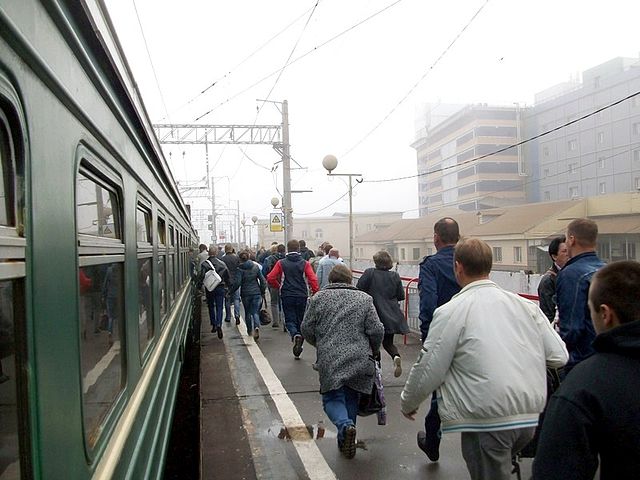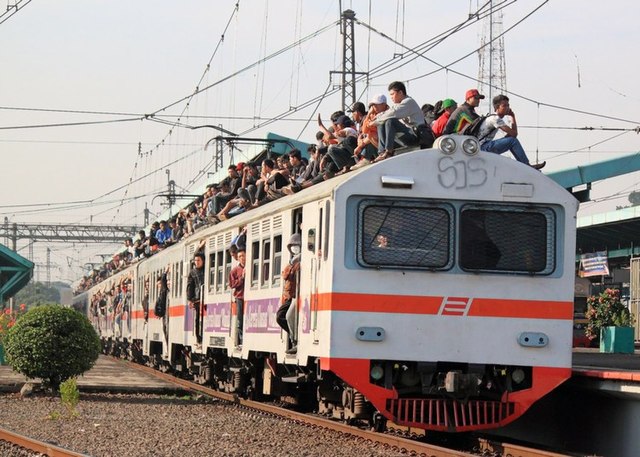Fare evasion or fare dodging is the act of travel without payment on public transit. When considered problematic, it is mitigated by revenue protection officers and ticket barriers, staffed or automatic, are in place to ensure only those with valid tickets may access the transport. The term fare avoidance is sometimes used as a euphemistic synonym and sometimes used to refer to the lawful use of much cheaper tickets.
Turnstile jumping in the Moscow Metro
Climbing over fence of a commuter train station in Moscow, Russia.
Fare-dodgers are running from ticket inspectors to the cars that they already checked in Zheleznodorozhnaya railway station, Balashikha, Russia.
A crowded KRL Jabotabek train with passengers riding on the outside in Jakarta, Indonesia
A turnstile is a form of gate which allows one person to pass at a time. A turnstile can be configured to enforce one-way human traffic. In addition, a turnstile can restrict passage only to people who insert a coin, ticket, transit pass, security credential, or other method of payment or verification. Modern turnstiles can incorporate biometrics, including retina scanning, fingerprints, and other individual human characteristics which can be scanned. Thus a turnstile can be used in the case of paid access, for example to access public transport, a pay toilet, or to restrict access to authorized people, for example in the lobby of an office building.
Old turnstiles at Alewife station on the MBTA Red Line in Cambridge, MA, U.S.
A wooden turnstile keeping livestock penned in (Zwierzyniec, Poland).
A circa-1930 turnstile and kiosk at the Bath Recreation Ground
Full-height turnstile in a fenceline








